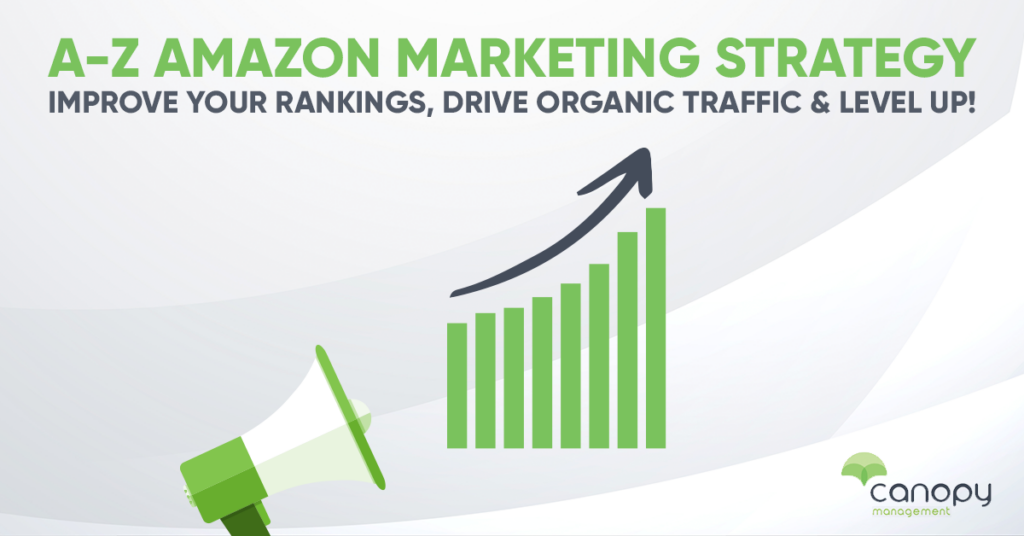Jumpstart Your Amazon Business in 2023 With These Powerful ACoS Strategies
Is a Lower ACoS Always Better? These Strategies Will Help Answer That Question and Give You the Xray Vision You Need to Track Your Ad Campaigns!

Most Amazon sellers have two principal, interrelated goals, generating profits and scaling their eCommerce business.
Even though some analysts were slightly underwhelmed with Amazon’s pace of recent growth, Amazon’s announcement that their 2022 third-quarter ad revenue totaled $9.55 billion for the quarter with year-over-year growth spiking to 25%.
Amazon pay per click advertising used to be just one way to launch your product. Now, PPC has rapidly become a must-have part of your Amazon marketing.
It’s as simple as this: if you’re interested in building an Amazon business, a powerful Amazon PPC campaign strategy is where you need to start!
But first, let’s take a closer look at one of the most common ways that eCommerce sellers measure the effectiveness of their advertising.
Thinking About Hiring an Amazon Management Agency?
Canopy’s Partners Achieve an Average 84% Profit Increase!
Let’s talkAdvertising Cost of Sales (ACoS)
Amazon advertising cost of sales (ACOS) is a metric used to measure Amazon pay-per-click (PPC)advertising campaigns. It compares the amount spent on PPC campaigns to the amount earned, and it helps determine if your ad campaigns are cost efficient.
It’s calculated by dividing total ad spend by total sales from advertising, then multiplying by 100. (Multiplying by 100 creates a more easily readable percentage: 30% versus .30 for example)
With success on Amazon linked so closely to the ad revenue generated by your Amazon ad campaigns, no other single metric will give you the same snapshot of your business’s health and scalability.
What About Amazon ROAS?
RoAS stands for Return on Advertising Spend. It’s a metric that measures how much revenue you’ve made in sales for each dollar you’ve spent on ads. ACoS indicates how much you have spent on your Amazon ad campaign in order to make a dollar from attributed sales.
ROAS is the opposite side of that same coin. It tells you how much money you earn for every dollar you spend on Amazon advertising.

Taking Amazon ACoS for a Spin
Back in the early, wild west days of eCommerce, selling on Amazon was a lot like a drag race. Find a product, pay for a bunch of positive reviews, and stomp on the gas.
Now, if I can compare it to anything, it’s like Formula One. The financial stakes have become enormous. Instead of a handful of shade-tree mechanics trying to get their stripped down cars to go faster in a straight line, there are millions of dollars at stake and controversy around every corner. There are a lot of twists and turns, and Amazon sellers are either downshifting, on the brakes, or are trying hard not to run out of fuel.
eCommerce sellers know that with Amazon’s constant changes and the ongoing supply-chain crisis, those twists and turns are just part of online commerce. Keeping a steady stream of inventory (your eCommerce fuel), requires constant vigilance.
It’s become ever more important to have a way of keeping a close eye on your Amazon ads. That’s where ACoS strategy comes in.
Break-Even and Target ACoS Will Help You Connect the Dots
The first step in creating an Amazon ACoS strategy requires calculating two important ACoS-based metrics, break-even ACoS and target ACoS.
Break-even ACoS is the point where your advertising cost becomes equal to your profit margin (calculated after all fees and costs involved with selling on Amazon are subtracted).
For example, once you’ve added your product costs, shipping costs, Amazon costs etc, your profit margin is what remains. If your profit margin is 30%, that’s also your break-even ACoS.
Once you have done the math and determined your target profit margin, subtract that from the break-even ACoS. What remains is your target ACoS. If we use the above 30% profit margin and want to have a 12% target profit margin, that leaves 18% as the target ACoS.
Not All ACoS is Created Equal
Amazon sellers get into trouble with Amazon ACoS when they forget that Amazon advertising conversion rates are subject to a number of factors.
It’s important to remember that:
- The perfect ACoS is specific to an Amazon sellers’ marketing and business goals
- A high ACoS might make sense if sellers are focused on volume and sales inertia for faster growth
- A lower ACoS is ideal for Amazon sellers on a tight budget needing to hit revenue targets
When you’re launching a new product, in some cases it might be a good idea to (temporarily) forget about the overall profitability of your advertising campaign and concentrate on volume and speed. During an Amazon product launch, the goal is getting the maximum amount of attention directed towards your product.
If you’re trying to make this happen ASAP, that’s going to contribute to a higher ACoS.
There are many instances during which Amazon sellers might anticipate having a higher ACoS, here are just a few:
- During a product launch
- While trying to increase brand awareness
- When liquidating inventory
- While increasing brand awareness
- When attempting to dominate a niche
Lowering Your ACoS
When Amazon sellers speak with each other at Amazon conferences and meetups, 90% of the conversations revolve around LOWERING their ACoS.
That’s easy to understand. If the Amazon product has traction and is selling, every dollar that is saved on advertising goes right into the profit column. That’s money that Amazon sellers can use to buy more inventory, launch a new product, or put aside for that Tesla Cybertruck.
Amazon success is a moving target and requires knowledge and attention. That’s why successful Amazon sellers are constantly adjusting their PPC campaigns to react to their competitors as well as changes in the marketplace.
TACoS are the Amazon Cool Kids’ Metric of Choice
Amazon ACoS only considers the sales that sellers make through ads. Because of that, experienced Amazon sellers often add a ‘T’ to their ACoS.
TACoS (total advertising cost of sale) includes total sales, rather than just Amazon sellers’ sales from the ads themselves.
Here is the basic formula for calculating TACoS:
TACoS = (Advertising Spend/Total Revenue) x 100
According to a lot of very successful 8 and 9-figure Amazon sellers, TACoS represents the most important overall metric.
TACoS gives you a holistic view of ALL your sales in relation to advertising spend. By taking into account your organic sales (your sales NOT made through ads) TACoS will show you how your PPC ad spend aligns with your overall business plan.
ACoS Best Practices

1. Eliminate the wrong keywords
Amazon sellers spend a lot of time trying to identify the right keywords, but having an understanding what the WRONG keywords are is just as important.
- Look at the pricey keywords eating into your budget. If all they’re doing is costing you money, pause the PPC campaigns that they’re associated with.
- To keep your ACoS low, you’ll want to take advantage of negative keywords. Managed correctly, negative keywords can save you money and increase conversions by decreasing the likelihood of your ads appearing in front of unqualified shoppers.
2. Optimize your page content
Most Amazon shoppers just don’t make it past page one of the search results. As an Amazon seller, it’s crucial that you structure your product listing to rank as high in the search results as possible.
Because Amazon uses the product information in your listing to determine relevance, you need to make sure that your Amazon listing is completely optimized.
To start, identify the most appropriate, searched-for keywords related to your listing. Choosing the right keywords can feel like cheating because Amazon will send you buyers WITHOUT having to spend money on advertising.
Step one involves conducting keyword research. By using a tool such as Helium 10’s Magnet, or Jungle Scout’s Keyword Scout, begin by determining the keywords that searchers on Amazon use to find a product similar to yours.
Then, take the time to see that your title, bullet points, product description, and back-end keywords are all optimized for the search terms (keywords) you’re targeting.
3. Use an Amazon Agency
If you want to drive more sales, boost brand awareness, and increase ad revenue, Amazon Sponsored Advertising is essential.
To get started, most Amazon sellers begin with a Sponsored Product campaign. One great way to hit the ground running is to take advantage of an Amazon PPC Agency
This is a pivotal point for many Amazon sellers. A team of Amazon experts and insiders can really help you take a big step up with your business. That might simply allow you to spend more time on your principal career, or better yet, with your family. Or, it could mean having the bandwidth to more quickly scale up your Amazon business.
In either case, here are three good reasons why your next call should be to the pros at CANOPY Management.
- Your PPC campaigns will be managed by Amazon advertising specialists, not A.I.
It all starts with optimizing your PPC campaigns to reduce wasted ad spend so your budget can go farther. That’s more money you can use to reach new audiences, drive sales, and ultimately, help you dominate your category on Amazon.
- CANOPY wrote the playbook on PPC optimization
Our optimization process, which has been adopted by sellers and agencies around the world, was originally developed by CANOPY Co-Founder and globally-recognized PPC expert, Brian R. Johnson. It’s a replicable, results-driven process that allows us to achieve better results (and an average 105% year-over-year PPC profitability increase) for our CANOPY Partners time and time again.
- At CANOPY, you’re a partner not a client.
We’re completely invested in our Partners’ success. That’s why open and direct communication through regular meetings and simple, transparent reporting is a vital part of our business ethos. By getting to truly know our partners and their vision, we are able to customize our strategy to meet (and exceed!) your unique business goals.

How CANOPY Management Can Help
CANOPY Management is a “full service” marketing agency for Amazon sellers, and our team consists of former Amazonians, multi-million dollar sellers, and award-winning experts. When you consider the ways in which CANOPY Management is able to help you grow your Amazon business, you’ll know why.
- Strategic Growth Planning
- Listing Copywriting Optimization
- Listing Photography
- Product Videography
- Advertising Management
- Customer Service
- Demand Side Platform (Amazon DSP)
- Amazon Posts
- Full Service Management
- Amazon Review Aggregation



